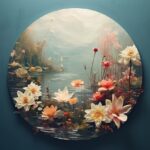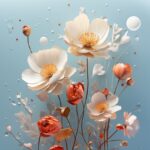In the bustling world of nature, the relationship between flowers and bees stands out as a beautiful and essential dance. This partnership is not just about the simple exchange of pollen for nectar; it’s a cornerstone of our ecosystem and agriculture. Their interaction, honed over millions of years, showcases the intricate web of life that sustains our planet.
Bees, often seen busily flitting from one bloom to another, are more than mere nectar collectors. They are pivotal pollinators, responsible for the reproduction of many plants. Each visit to a flower involves the collection of nectar, which bees use to make honey. In the process, pollen sticks to their bodies and is transferred from flower to flower, facilitating fertilization. This seemingly simple act ensures the production of fruits, seeds, and the continuation of plant species.
Flowers, in return, have evolved to attract bees with bright colors, alluring scents, and intricate shapes. These characteristics are not just for beauty; they serve the critical function of guiding bees to the nectar. For instance, the patterns on petals, often invisible to the human eye, act as landing strips for bees, directing them to the nectar and ensuring efficient pollination.
The importance of this relationship extends beyond the natural world into human agriculture. Bees are crucial for the pollination of crops like apples, almonds, and blueberries. Without their tireless work, the availability and quality of many fruits and vegetables would decline significantly. This interdependence highlights the fragility of our food systems and the importance of protecting bee populations.
Sadly, bees face numerous threats today, from habitat loss and pesticides to climate change. The decline in bee populations poses a significant risk to global food security and biodiversity. Efforts to create bee-friendly environments, such as planting wildflowers and reducing pesticide use, are essential steps in supporting these vital pollinators.
Our awareness and appreciation of the relationship between flowers and bees can lead to positive action. By fostering environments where bees can thrive, we not only support these incredible insects but also ensure the health and productivity of our ecosystems. Simple actions, like planting a variety of flowers in our gardens and supporting organic farming practices, can make a significant difference.
In the grand tapestry of life, the dance between flowers and bees is a testament to the interconnectedness of all living things. Their relationship reminds us of the delicate balance required to maintain our natural world and the crucial role each species plays in sustaining it. By nurturing this bond, we help safeguard the future of our planet.


